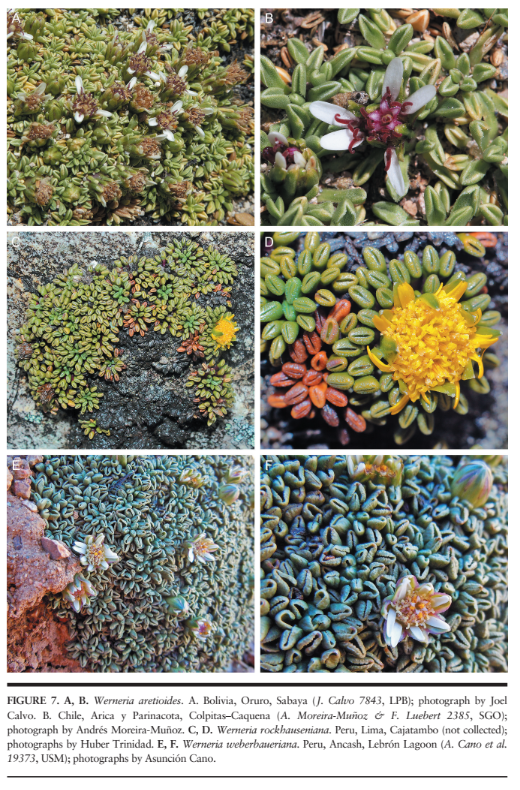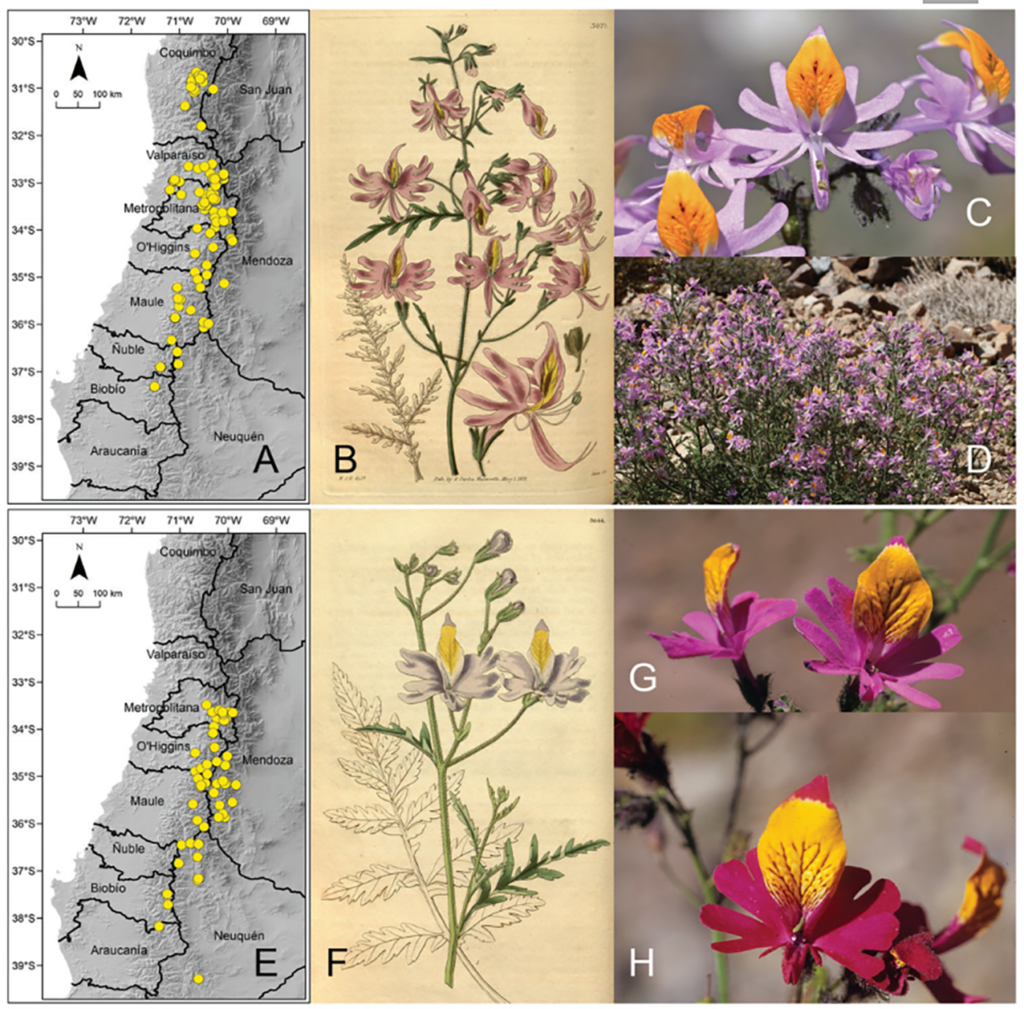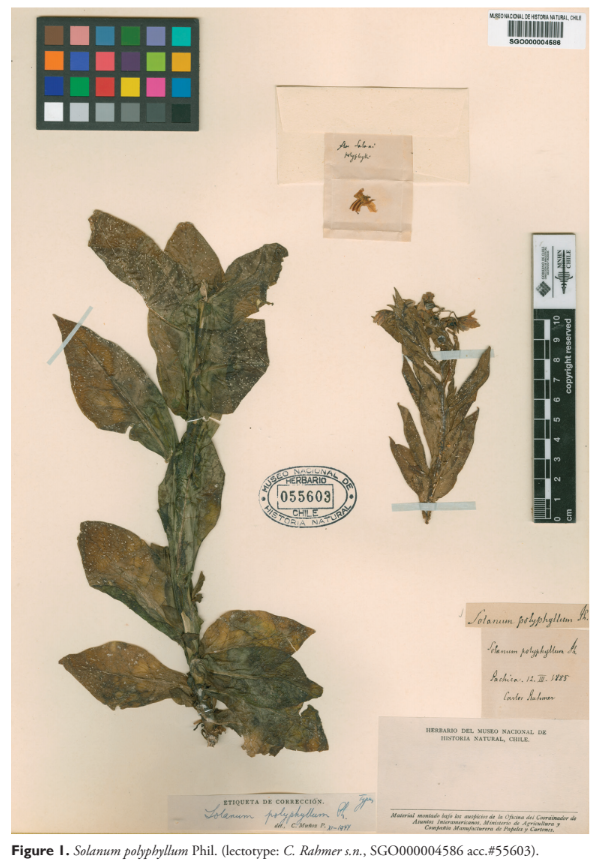Artículos en: Diversity & Taxonomy

Fitosociología Y Sintaxonomía de las Comunidades Boscosas Caracterizadas Por Archidasyphyllum Excelsum (D. Don) P.L. Ferreira, “Tayú”, en la Región De Valparaíso, Chile
2023
Se presentan los resultados de un estudio de la sintaxonomía de la vegetación de los bosques de “palo santo” o “tayú” (Archydasyphyllum excelsum (D. Don) P.L Ferreira) de la costa de Chile central, con énfasis en la Región administrativa de Valparaíso. El estudio se basa en la aplicación del método de Braun-Blanquet para la clasificación de las asociaciones de los bosques de Chile mediterráneo. Se han tomado en consideración las comunidades de vegetación en las que participa el tayú junto con los elementos esclerofilos o caducifolios. Se levantaron 70 censos fitosociológicos entre los años 2015 y 2023, en comunidades donde el “tayú” era dominante, utilizando la escala de abundancia-dominancia, indicando la sociabilidad y la importancia de cada especie. El trabajo permitió describir nueve asociaciones incluidas en dos alianzas: Cryptocaryon Smith., 1956 y Dasyphyllion excelsi Balduzzi & al.1981 ambas en el orden: Cryptocaryetalia albae Schmith. 1956; y en la clase: Lithraeo causticae- Cryptocaryetea albae Oberd. 1960. La mayor parte de los bosques en que participa Archidasyphyllum excelsum crecen en la reserva de la biosfera La Campana-Peñuelas. Estos bosques son relevantes por la presencia del “tayú”, que está considerada como una especie vulnerable a la extinción, especie que puede estar acompañada por otras especies también en categorías de extinción y por su alto grado de endemismo. Se trata de bosques cuyas áreas de distribución están permanentemente bajo amenazas antrópicas como la expansión urbana, la instalación de infraestructura, y los megaincendios forestales.
Rodrigo Villaseñor,
Simón Olfos,
Andrés Moreira-Muñoz

Taxonomic Revision of the Neotropical Genus Werneria (Compositae, Senecioneae)
July 2020
Calvo, Joel, Andrés Moreira-Muñoz, and Vicki A. Funk. Taxonomic Revision of the Neotropical Genus Werneria (Compositae, Senecioneae). Smithsonian Contributions to Botany, number 111, vi + 123 pages, 58 figures, 3 appendixes, index, 2020. — Werneria is a neotropical genus belonging to the tribe Senecioneae (Compositae) that is mainly distributed through the highlands of the Andes. Only a single species, W. nubigena, has a trans-Andean distribution and reaches the Tacaná Volcano in southern Chiapas (Mexico). The traditional concept of Werneria was significantly narrowed at the end of the twentieth century after segregating several species and accommodating these mostly in the genus Xenophyllum. As currently circumscribed, it includes rosettiform or scapiform species characterized by usually displaying involucral bracts that are fused at the base, supplementary bracts commonly absent, usually radiate but sometimes discoid or disciform capitula, white or yellow ray corollas (when present), a balusterform filament collar, and style branches that are truncate and have a crown of sweeping hairs.
Joel Calvo,
Andrés Moreira-Muñoz,
Vicki A. Funk

Synopsis of Schizanthus Ruiz & Pav. (Solanaceae), a genus endemic to the southern Andes
August 2020
We present a taxonomic synopsis of the South American genus Schizanthus Ruiz & Pav. (Solanaceae), within which we recognise seventeen taxa (14 species with three infraspecific taxa). The genus is mainly distributed in Chile between the coast of the Atacama Desert and the southern temperate forests, while two species occur in the Argentinian Provinces of Mendoza and Neuquén. This taxonomic treatment is based on the analysis of herbarium specimens from 30 different herbaria. For each accepted species we provide details of type specimens and synonymy, key characters, habitat, distribution information and presence in public or private protected areas. We also incorporate a list of representative localities from examined material.
Vanezza Morales-Fierro,
Mélica Muñoz-Schick,
Andrés Moreira-Muñoz.

Rediscovery and taxonomic placement of Solanum polyphyllum Phil. (Solanaceae), a narrow endemic from the Chilean Atacama Desert
August 2020
Although the original description of Solanum polyphyllum Phil. was made in 1891, this species was not seen until it was re-discovered 128 years later in 2019 in the Atacama Desert. Fruits and seeds were previously unknown and a complete description is provided here. This species was not treated in the most recent monograph of Solanum sect. Regmandra, but it should be incorporated in this section due to its glabrous, sessile and entire leaves, which are decurrent onto the stem. Morphologically, S. polyphyllum is similar to S. paposanum, also of section Regmandra, but differs in the entire leaves (against margins with 4–5 acute lobes in S. paposanum) and glabrous leaves (moderately pubescent adaxially and velutinous abaxially in S. paposanum). The rediscovery of S. polyphyllum at a new locality at the same altitudinal belt as the type, re-affirms its restricted distribution and endemism and supports a potential conservation status as an endangered species.
Andrés Moreira-Muñoz,
Mélica Muñoz-Schick.